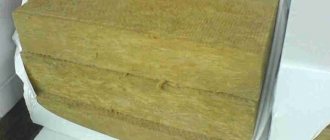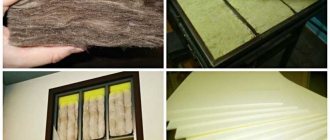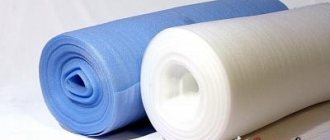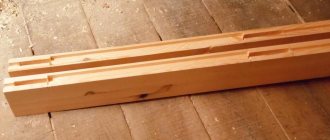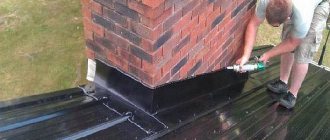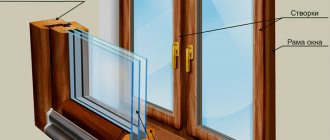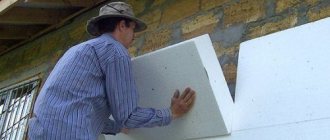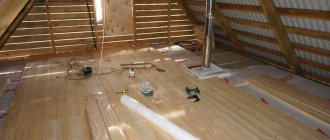To prevent a metal door from letting in cold air and noise from outside the room, it must have a seal on it. This rather simple but very important fitting becomes unusable over time and therefore requires periodic replacement. When purchasing it and installing it yourself, it is necessary to take into account certain nuances, then the product will perform all the functions assigned to it. Next, let's look at what a seal for iron entrance doors is, how to choose and install it correctly.
Why do you need a seal?
The seal is essentially a tape that is glued along the entire perimeter of the box. Everyone noticed her when entering the house. As a rule, the seal in private houses is installed on street entrance systems or on structures leading from the cold corridor further into the room. In high-rise buildings it is installed on the doors separating the apartment from the landing.
This fittings performs several functions at once:
- The seal for the metal entrance door protects the apartment from the penetration of air from the entrance into it, including providing isolation from extraneous, unpleasant odors (garbage chute, cigarette smoke), dust, and excess moisture.
- Guarantees sound insulation. Moreover, it protects both the apartment from the penetration of sounds into it and reduces the audibility of what is happening in the room itself.
- Retains heat and prevents cold air from entering the house. In the summer, on the contrary, it prevents hot air from getting inside. This fitting also prevents drafts.
- The seal is responsible for the smooth and silent operation of a metal door. There will be no loud clapping with him.
In addition to these tasks, the seal for iron doors partly serves as protection in case of fire: it prevents smoke from leaking into the room. But the fittings will do this only if the tape fits tightly to the metal door without gaps, and its material and workmanship are of high quality.
If you buy a seal that is too thick, it will be difficult to close the door leaf itself and the locks; considerable effort will be required, which will lead to wear of all door hardware. If you choose a tape that is too thin, it will not be able to perform its insulation functions.
Veneered doors
To make a sealed door look attractive, inexpensive wood is finished with a variety of finishes. The most common technology is veneer gluing.
The basis for veneer is chipboard or pine. The material is covered on both sides with veneer made from expensive wood. Then the coating is sanded and coated with colorless furniture varnish.
This manufacturing technology is used to create a smooth or textured surface. Veneered products meet modern environmental requirements, as they are made only from natural wood. The veneer strips are glued with special wood glue.
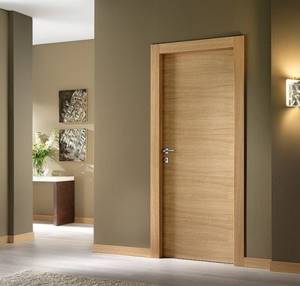
Veneered model
Entrance doors finished with veneer require special attention. This model does not tolerate high humidity and sudden temperature changes. If these parameters are violated, the wood will swell and the coating will peel off.
Types of seals
This fittings are made from various materials. The simplest options are made from foam rubber, plastic or polyurethane. They are not expensive at all and are equipped with self-adhesive tape, which makes installation much easier. But they have a very big drawback: they quickly wear out and wear out. Therefore, such seals are not worth buying for metal doors.
For metal structures, it is better to choose a silicone or rubber seal.
The advantage of the former is that they are odorless, do not emit any substances into the indoor air, and have high environmental friendliness. There are no allergies to silicone, so such seals are installed in medical institutions, rooms where there are children or people with allergies.
But most often rubber seals are purchased for metal doors. Such fittings have an affordable price and a long service life. Modern types of rubber are resistant to adverse conditions (moisture, temperature), aggressive substances, ultraviolet rays, they do not crack or crumble. Some people are not afraid even of acid.
In addition to the material, seals for metal doors differ in the method of their installation.
They come in three types:
- Self-adhesive. You can replace the seal for iron entrance doors of this type yourself, without any additional devices or tools.
- Magnetic. Quite a new type of tape. They are more often used by manufacturers of metal doors, who immediately equip their products with all the necessary fittings. These seals are not much different from those located on the refrigerator door. Their operation is ensured by a special magnetic insert located inside the thermoplastic elastomer. This product is resistant to aging and can withstand a wide temperature range: -65...+90 degrees. It is installed on the door frame, but you need to clearly adjust the degree of pressure so that the door does not open too hard.
- With additional elements for pressing. In this case, a strip is installed to hold the seal. Due to this, the material retains its shape and characteristics for a long time and does not deform.
Sealing strips by door type
For each individual variety, its own seal was developed.
Input
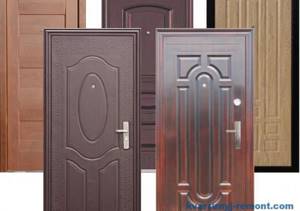
Most often, entrance doors are finished with a dense material in the shape of a tube, inside of which there is a void. The significant thickness and bubble nature of the material create a reliable fit of the door to the frame. Read this article on how to choose reliable and warm doors for your home.
Of particular interest is the internal structure of these rubber bands for insulating doors. Thanks to the presence of internal pores, a multiple increase in the insulating effect is achieved. Most often, the entrance door seal has a self-adhesive base, which makes its installation very quick.
On the other hand, over time, the glue loses its characteristics, and the strips begin to lag around the perimeter. You can read about comprehensive door insulation.
Interior

The seal for interior doors is not assigned the function of protecting the room from outside cold, as in the previous case.
This allows you to make it more aesthetically pleasing by using more elastic and soft silicone instead of dense rubber. The installation method for these products may differ, which will be discussed below.
If you decide to change the doors during the renovation process, be sure to read this article.
Plastic
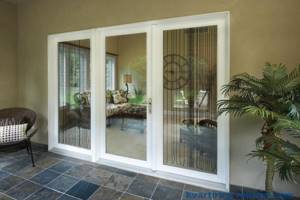
This group of materials is characterized by high speed of installation and dismantling. Grooves are usually applied to plastic doors along the line of contact with the frame, so the seals are given a special shape that follows the configuration of these grooves. Thanks to the presence of walls on the sides of the fixation point, the sealing strip receives additional protection from external aggressive influences. The seal for plastic doors is not afraid of moisture and temperature changes, so it can be used both outdoors and on interior doors without much difference. It is important to keep in mind that this rubber seal was designed specifically for plastic doors with grooves, so it is not recommended to seal other types of doors with it. In addition, different manufacturers complete their plastic doors with an individual seal: this should also be clarified when selecting a suitable material.
What is foamed polystyrene
Find out about the pros and cons of plastic doors in the room.
Glass
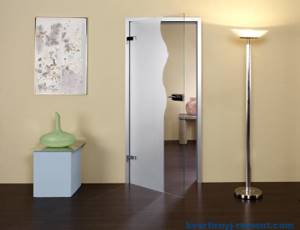
In the manufacture of seals for glass doors, silicone is used, equipped with a special profiled notch. When installing the strip, you must first wet the area where it will be placed: this will make the connection as strong as possible. Since the design of glass doors can be very different, therefore, a different seal is developed for each of them.
How to choose a seal for a metal door?
The first step is to decide on the size of the tape, its type and shape. Most often, this fittings are sold in rolls of 6 meters, which is quite enough for a standard entrance door. But for good insulation, several layers of sealant are used, this must be taken into account immediately when purchasing.
Tips for choosing a seal:
- The required thickness and shape of the tape is selected for the door itself and the resulting gaps. The easiest way to do this is with a piece of plasticine. It needs to be wrapped in film (bag) and inserted into the gap between the box and the canvas when the doors are closed. After this, you can measure the required thickness of the seal.
- If the thickness of the gap is insignificant (from 1 to 3 mm), then you can choose a seal for rectangular metal doors made of polyvinyl chloride or polyethylene foam.
- If the size of the cracks is more than 3 mm, then you need to buy rubber material. Its shape can be different, which is determined by its thickness. The thinnest ones up to 3 mm have the appearance of an E or K profile (reminiscent of these letters in cross-section). If the gap is up to 5 mm, then you should opt for P or V-shaped products. D or O shaped profiles are used for the largest gaps from 5 to 7 mm.
- It is better not to purchase a foam rubber seal for a metal door. Iron entrance structures are installed at the entrance of the room, they are often opened and closed, and foam fittings are short-lived.
- If the seal is not self-adhesive, then you need to immediately buy good quality silicone glue for it.
In addition to these characteristics, the color of the material is also important; it is selected depending on the design of the door. But the most successful product is considered to be black: no dyes are added to it, and they usually reduce the quality of the product. It is the black seals that are installed on the outer door, where the insulation requirements are maximum.
Requirements for sealing parts
There are certain requirements for sealing products.
This part must provide high tightness. A high-quality door system can reliably protect a home from extraneous noise from the entrance or from the street, from humidity, various small debris, and also from odors.
The sealing element must ensure a reliable and smooth closing process. The material from which such fittings are made must fully comply with certain standards for impermeability to moisture, odors, as well as shock-absorbing capabilities.
Such a fitting element completely eliminates the loud and sharp sounds with which a steel door usually closes. With a seal for metal doors, the closing process should be completely silent.
In winter, the part may be subject to significant temperature changes - the material must be able to withstand such loads. The sealant should not change its properties, namely harden or lose elasticity. A high-quality element works well together with the door leaf. During the closing process, even small gaps should not form.

Another requirement is fire safety. The rubber seal should prevent smoke from entering the room.
What to look for when purchasing?
When choosing a seal for steel doors, you need to carefully inspect it and check its quality.
In particular, you should perform the following actions:
- Read the label on the product, which indicates the expiration date, all the necessary information about the seal and the material used for its manufacture.
- By pressing it is worth checking the elasticity and tightness characteristics. The material should be medium hard, then it will not interfere with the door closing well. When pressed, it should quickly restore its original shape. This is a sign of high quality material.
- If the seal is on self-adhesive tape, then you need to find out the expiration date of the glue. Otherwise it could just dry out. Also, small particles of fiberglass should be applied to the adhesive part.
Most often you can find such products on sale from Germany, Sweden, Poland or Turkey. A good product should not harden when the temperature drops, or peel off when it fluctuates; release toxic compounds into the air.
Sealing of interior doors
To improve tightness and improve sound insulation properties, the gap between the canvas and the box is trimmed with a special seal. Its installation is carried out around the perimeter of the structure.
Today, the construction market offers various seals for sealing and noise reduction. Special pads, rubber cords and expansion strips are sold. However, their use does not always lead to a positive result.

Range of seals
How to attach the seal?
Most often, a new metal door is already equipped with a seal. But if it is not there or replacement is required, then you can install it yourself.
They do this taking into account the following recommendations:
- If the door is of good quality, then it already has special gutters for installing the seal.
- Before installation, the surface must be prepared: cleaned of dust, remnants of old tape (preferably treated with sandpaper) and be sure to degrease. To do this, simply wipe the surface with acetone, alcohol or another solvent.
- For good sealing, it is better to use 2 or 3 layers of sealant. Two are preferable for the door that opens into the entrance, three for the one that opens to the street. The first is mounted on the canvas from its inside, the second layer is installed on the box, and the third is glued to the outside of the canvas. The external one should be the most resistant to any factors: temperature, light, humidity.
- If the surface has been painted, then the sealing of the metal entrance door can be carried out no earlier than after 20 days.
- If the product is made of rubber, it is glued using silicone glue. The substance is applied to the tape in a fairly dense layer and pressed against the surface.
- If you use a self-adhesive seal for metal doors, then the film must be removed gradually, fixing the tape around the entire perimeter of the door leaf. As the tape is glued, it smoothes out.
The most difficult thing when installing a seal with your own hands is the corners. In them, the tape often wrinkles, comes off, and it is impossible to lay it flat. Therefore, you need to be especially careful in these places. For a more even fit, the rubber seal for iron doors pulls back slightly when gluing. When the product is completely glued, all excess is cut off with a knife.
Even an insulated metal door needs a seal installed to ensure there are no gaps at all. High-quality fittings will protect the room from noise and dust and provide thermal insulation. You should not save when choosing insulation, then it will last a long time.
Sliding doors
Similar designs are used in rooms where space is very limited; sealed interior partitions are used to divide the room into zones. Special rollers are attached to the ceiling, thanks to which the doors move along a rail installed parallel to the wall.
Sliding doors are made from several types of material:
- wood;
- glass;
- composite.
Note that this design is considered the safest among all models. The movement of the sash along the guide completely eliminates injury to a person in the event of sudden opening.
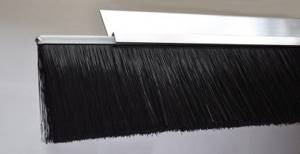
Brush seal for improved sealing
Elimination of seal defects
To detect a defective area, the following methods are used:
- A notebook sheet is inserted into the resulting gap. By moving it in different directions, you can quickly detect the defect that has arisen.
- The junction of the door is treated with chalk and the door is tightly closed. In places where the chalk is maximally erased, the sash becomes jammed. This area becomes a source of leakage.
- When installing metal doors, you can use a magnetic circuit for sealing. It works no worse than a rubber or silicone seal. The flap tightly closes the box, the connection becomes completely sealed. The magnetic seal guarantees a 100% connection without leaving any gaps.
To prevent a draft from forming, the lower part of the canvas is additionally equipped with a special threshold. When the sash begins to close, the threshold falls out; when it opens, it rises.
Special threshold slats are also installed. Tightness and excellent soundproofing effect are provided by installing threshold brushes at the bottom of the canvas.
You will learn how to achieve maximum tightness and sound insulation of the door by watching the video.
Voted over 186 times, average rating 4.2
Comments
Unfortunately, there are no comments or reviews yet, but you can leave your...
Add a comment Cancel reply
We recommend reading
Types of doors Unequal-floor double-leaf interior doors: application options The designs of such doors are very convenient in cases where your ...
Types of doors Advantages of using glass doors with dark glass in the interior When creating an interior project, modern designers often decide ...
Types of doors Advantages of interior folding corrugated systems and book doors The desire to effectively use living space, the desire to make ...
Types of doors The right choice of lightweight interior doors For rooms without special requirements for sound insulation and ...
Application (how to glue)
The insulating material itself should be installed on the metal door frame, but not as tightly as possible. This will ensure the best fit, which will affect the thermal insulation and noise protection properties. Moreover, the position of the installed door does not matter; in any case, it is possible to glue the insulation along the perimeter of the door jamb.
If you have a rubber or foam version, adhesives like Moment are suitable, and other types also adhere well to it.
Before starting work, you need to properly degrease the base for the glue; this can be any solvent or alcohol-based product.
Here's a video showing how to glue a rubber seal to a metal door:
